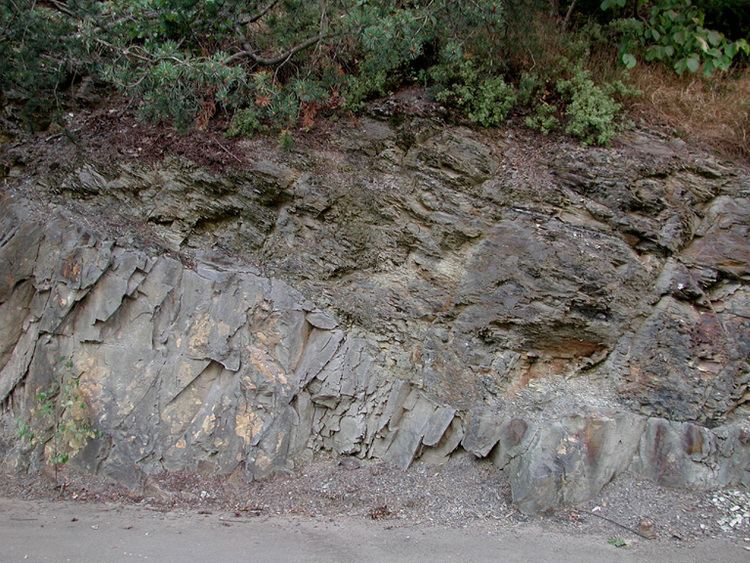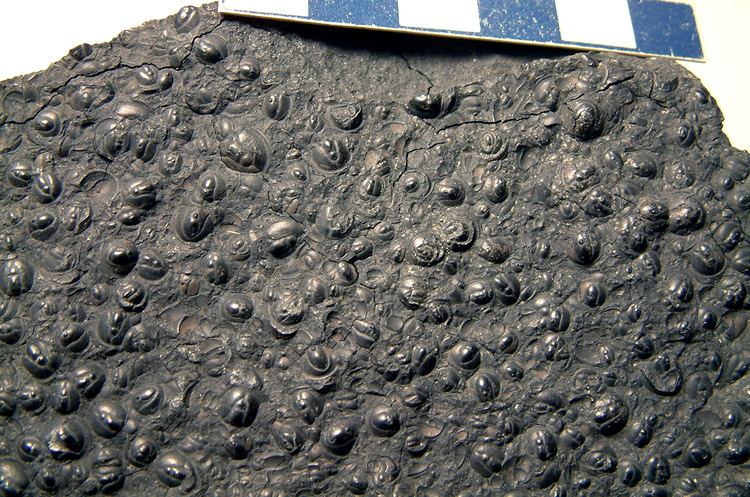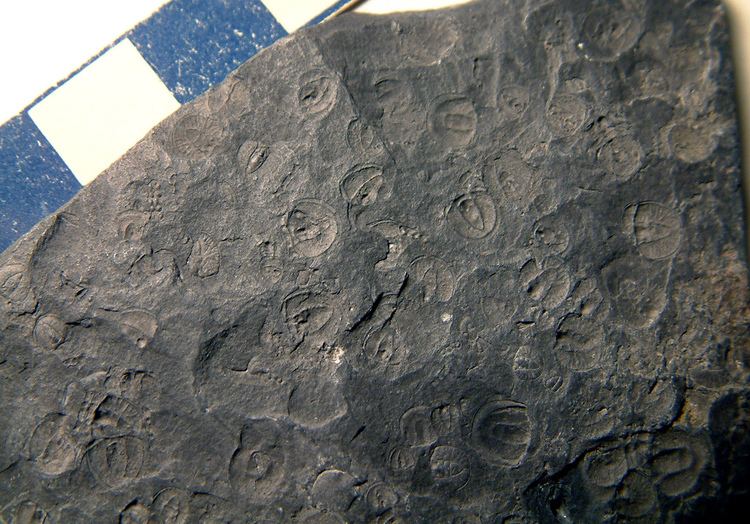Thickness up to 160 m Primary Slate | ||
Country Sweden, Denmark, Norway | ||
The Alum Shale Formation (also known as alum schist and alum slate) is a formation of black shale of Middle Cambrian to Tremadocian (Lower Ordovician) in age found in southern Scandinavia. It is shale or clay slate containing pyrite. Decomposition of pyrite by weathering forms sulfuric acid, which acts on potash and alumina constituents to form alum, which often occurs as efflorescences on the rock outcrop.
As the formation contains kerogen originated from algae, it is also classified as marinite-type oil shale. At the same time it is rich in aromatic hydrocarbon attributed to post-depositional irradiation damage induced by uranium concentration in the shale. Alum shale also contains enhanced levels of radium as a result of uranium decay. Between 1950 and 1989, Sweden used alum shale for the uranium production.





